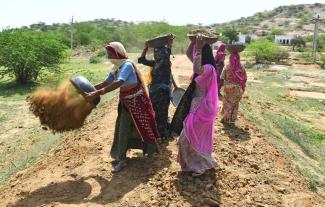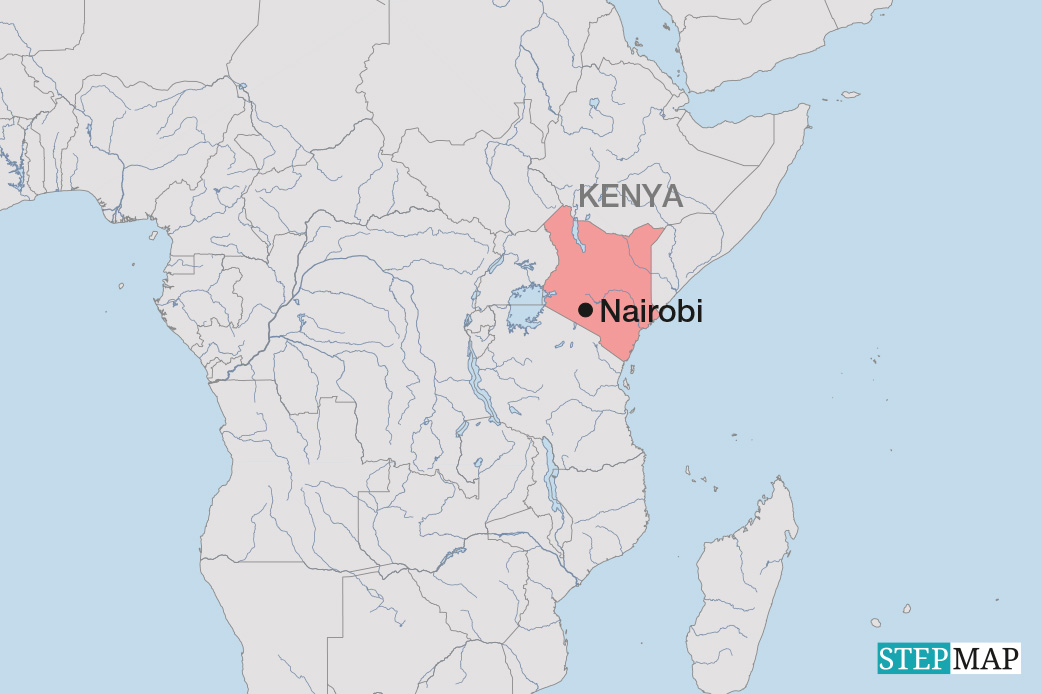Social protection
How social-protection systems matter in the climate crisis

For poor and disadvantaged people around the world, the climate crisis is a double threat. On the one hand, they are especially vulnerable to climate risks such as extreme weather events which are becoming more frequent and more intense. On the other hand, measures to mitigate climate change can put these communities at a disadvantage, further adding to their marginalisation. Social-protection systems make it easier to tackle both problems. Accordingly, they should be established and extended everywhere.
The term “social protection” covers a range of policy instruments, from welfare handouts, financial transfers and employment schemes to government-sponsored health insurance or pensions. The instruments have in common that they support individual persons and families. They can end extreme poverty – and prevent it from childhood to old age.
A core function of social-protection schemes is to boost peoples’ resilience to shocks (see Markus Loewe on www.dandc.eu). That includes individual shocks, such as an illness or job loss, as well as collective shocks, such as a drought or flooding. Experts speak of “adaptive” social protection when schemes are designed to respond fast to collective shocks by adjusting modalities and scaling support. In the event of a collective shock, affected people who already receive benefits can temporarily get extra support. Moreover, coverage should be expanded to additional people who now qualify for support. An adaptive system does so in a far-reaching, fast and flexible manner. Ideally, the system will anticipate collective shocks and provide additional support even before they hit, boosting vulnerable peoples resilience and preventing the shock from triggering a full-blown crisis (regarding social-protection and refugees, see Maren Suchta-Platzmann and Amédé Schmitz on www.dandc.eu).
The adaptiveness of a social-protection system hinges on several factors, including:
- data and information-processing systems that facilitate the identification of vulnerable people and link that information to risk assessments,
- robust delivery infrastructure, including for digital payments, so people are reached reliably,
- financial buffers to allow urgently needed money to be disbursed fast.
- financial buffers for reserves lined up for rapid disbursement.
One example is the multilateral “Sahel Adaptive Social Protection Program” (SASPP). It is run by the World Bank. Germany is its most important donor. The SASPP is being implemented in Burkina Faso, Mali, Mauritania, Niger, Senegal and Chad. The idea is to gradually develop the countries’ nascent social-protection programmes into comprehensive and adaptive systems.
The SASPP focuses on preventing drought-induced food crises. Due to its adaptive nature, it nonetheless proved useful during the Covid-19 pandemic, with more than 4.6 million people in the Sahel region receiving additional cash transfers by September 2021.
It is possible to combine basic social-protection schemes with measures that help people to adapt to climate change, for example by diversifying economic activities. Experts speak of “economic inclusion”. The Partnership for Economic Inclusion is a global network which is coordinated by the World Bank and promotes such approaches, for example in Niger in the context of the SASPP.
Moreover, strong social-protection systems can reduce the need for humanitarian relief in times of crisis. An increasing number of developing countries are buying sovereign climate-risk insurance (see essay by Renate Bleich et al. on www.dandc.eu). It entitles them to financial payouts, for example, should they be hit by severe drought. So far, the insurance payouts are mainly channelled through the humanitarian system to people in need. Yet, efforts are underway to use the national social-protection systems instead.
Lessons from the pandemic
In response to Covid-19, almost every country adopted some social-protection measures to cushion the socio-economic impacts (World Bank 2020). Without them, even more people would have fallen deeper into poverty (UNDP 2021). In this sense, the pandemic proved that social protection does indeed mitigate the impacts of collective shocks.
However, dramatic disparities between nations became strikingly evident. Where strong social-protection systems were in place, governments could respond to this major crisis comparatively well. Where the need is greatest, by contrast, such systems are often still in their infancy or do not exist at all. Of the world population, 53 % are not covered by social-protection systems. In Africa, the rate is even higher: 83 %. Many programmes are quite slow, moreover, and more funding is needed too.
These things have implications for tackling the climate crisis. Where the vulnerability to climate impacts is great, social-protection systems must improve fast. That is a core message of the Global Risk Report 2021, which was published by Bündnis Entwicklung Hilft, an alliance of Germany development and relief agencies (see Monika Hellstern on www.dandc.eu).
Setting up social-protection systems is a long-term but worthwhile effort, as the Cambodian example shows. German agencies, including the GIZ, have been cooperating with the national government for more than ten years on developing mechanisms to identify poor households and creating the poverty registry IDPoor. During the pandemic, an additional 50,000 people could be registered within ten days in May 2020. So far, IDPoor has facilitated timely cash transfers to more than 2 million people.
Social justice and climate protection
In view of the climate crisis, we must make our societies and economies climate neutral. The core principle of the Sustainable Development Goals (SDGs), which the UN adopted in 2015, is to leave no one behind. However, some mitigation policies create or exacerbate social disparities, for example when jobs are lost in fossil industries or when prices of vital goods rise.
This is not only problematic from a social justice perspective. It also threatens the political viability of ambitious climate action. When they affect large sections of the population without compensation, protests may arise that may thwart implementation. In settings of this kind, adaptive social-protection systems have a stabilising and compensatory function. This is how social protection can facilitate a just transition to climate neutrality.
So far, however, there are only few examples of policymakers intentionally using social-protection schemes to make more ambitious climate action politically viable. In practice, such schemes have mostly served to cushion job losses, for example when coal mines are closed.
That said, some social-protection instruments are intentionally used in the context of climate mitigation. So-called “payments for ecosystem services” programmes offer financial rewards either for verifiable eco-friendly action or for refraining from harmful practices such as unsustainable logging. To a growing extent, moreover, public works programmes are geared to green goals. Prominent examples include India’s MGNREGA (Mahatma Gandhi National Rural Employment Guarantee Act) and Ethiopia’s Productive Safety Net Programme.
The experience of the pandemic has proved once more just how important adaptive social-protection systems are for societies to cope with collective shocks. In view of escalating climate risks, such systems are becoming increasingly important. Therefore, it is high time to work together across sectors at all levels to strengthen these systems and close coverage gaps. This requires concerted efforts at the nexus of social protection, humanitarian assistance, climate adaptation, climate-risk finance and disaster-risk management.
References
World Bank, 2020: Social protection and jobs responses to Covid-19: a real-time review of country measures. Washington, DC.
https://openknowledge.worldbank.org/handle/10986/33635
UNDP, 2021: Mitigating poverty: global estimates of the impact of income support during the pandemic.
https://www.undp.org/library/dfs-mitigating-poverty-global-estimates-impact-income-support-during-pandemic#modal-publication-download
Bündnis Entwicklung Hilft, 2021: WeltRisikoBericht 2021.
https://weltrisikobericht.de/download/2514/
Stefan Beierl is a social protection adviser at GIZ.
stefan.beierl@giz.de







